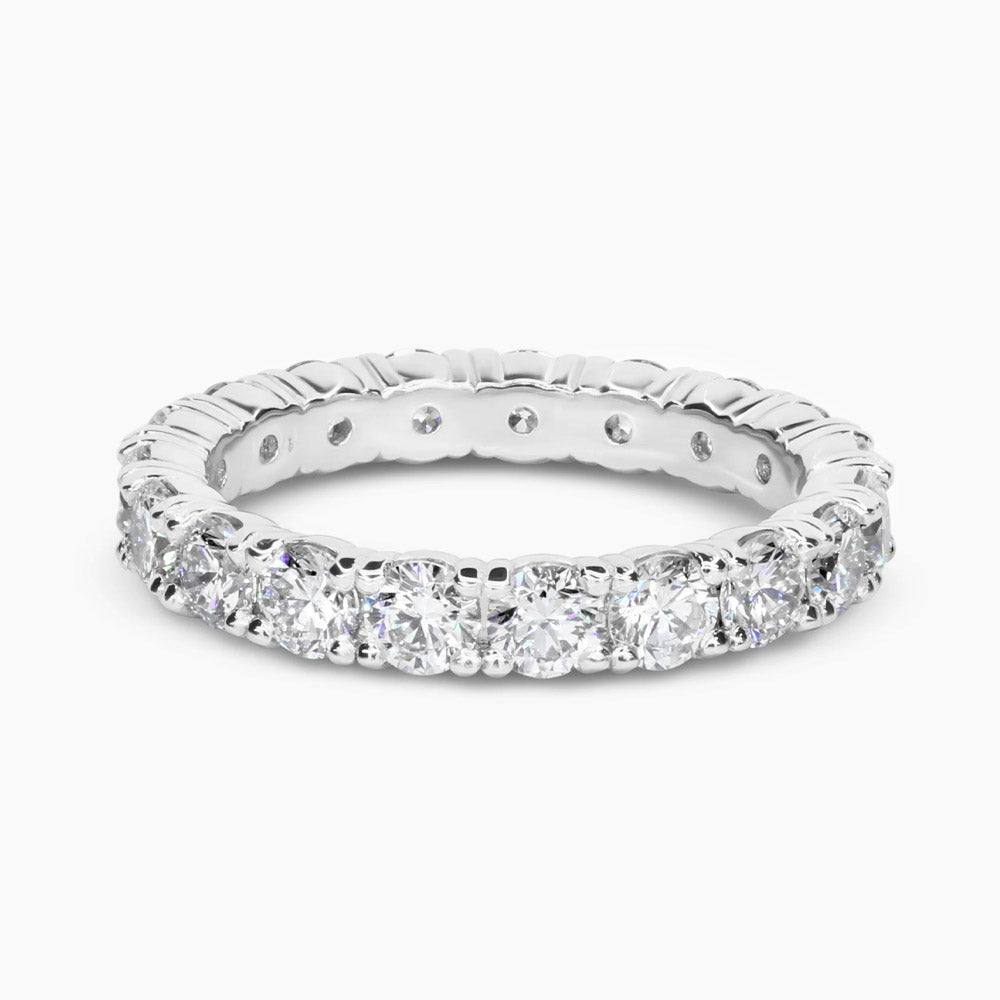Bringing Light to Life
When we observe a beautiful diamond we admire its remarkable ability to radiate light in all directions with extraordinary intensity. This eternal gift of light is the life of the diamond. Every diamond is born with the ability to shine. In this universe, only man with his science and artistry can enable the diamond to come to life. By polishing, faceting, and shaping the raw diamond in precise, optically correct proportions, man has unleashed the awesome brilliance potential of the diamond. Diamond cutting techniques began in the fifteenth century and have been refined over the ages. Master craftsmen often passed this incredibly demanding art from generation to generation. Although techniques have changed over time--with the use of sophisticated tools and machinery--the finest cutting of a gem from rough stone is still preformed by a skilled craftsman's hands.
Cut is the Key to Light Performance
The cut of the diamond is the secret to its illuminating beauty because it is the single most important factor in determining the fire and brilliance of a diamond. The precision of each facet is vital because the more a diamond reflects and refracts light, the better its radiance and intensity. When it is done properly, the cut of the diamond skillfully manages the reflections and refractions of light optimally to achieve maximum brilliance, fire, luster and scintillation. When a diamond is cut to the precise level where all incident light rays entering the diamond are propelled back through the crown region of the diamond with no internal interference, then the Ideal Light Performance State has been reached. At this level, the light performance is 100%. The Light Input equals the Light Output. The diamond as a light machine is fully efficient with no loss of light energy. The GemEx BrillianceScope is an excellent instrument for measuring light performance.
Tolkowsky’s Ideal Cut
In recent years, the term Ideal Cut has been used loosely to describe diamonds of fairly well-cut proportions. Marcel Tolkowsky first introduced the concept of ideal cut proportions for round diamonds in 1919. His Master's thesis entitled " Diamond Design-A study of the Reflections and Refractions of light in a Diamond", scientifically analyzed the optics of a baroque brilliant cut diamond. His conclusion was that there is a set of proportions a diamond can have that would allow maximum brilliance and fire to be achieved. His work was the first formal effort using mathematics and physics to arrive at a scientific conclusion for the requirements necessary to optimize light return for a diamond with a known critical angle of refraction.
Tolkowsky’s Measurements Still Used Today
Mr. Tolkowsky provided specific mathematical tolerances for the crown angle, pavilion depth and table size of his ideal cut diamond. Even though Mr. Tolkowsky's analysis of the baroque brilliant diamond was empirical in nature and based on a two dimensional model with no emphasis on girdle thickness, amazingly, Mr. Tolkowsky's measurements are still today regarded by many in the diamond world as the standard for ideal proportions for a round brilliant cut.
AGSL Committed to Ideal Cut
In 1996, American Gem Society established the AGSL (American Gem Society laboratory) to provide a Diamond Quality Document that included the cut quality evaluation of a round brilliant cut diamond as part of their report. The proportion model AGS used to benchmark their Ideal "0" Cut rating was derived from Mr. Marcel Tolkowsky's model with very minor adjustments.
GIA Not Committed to Ideal Cut
While the GIA, the most prestigious and reliable gemological institution in the industry, is in the midst of rigorous scientific research to determine the precise technical definition of the ideal round brilliant cut, they are not ready at this point in time to commit to a specific model. GIA president, Mr. Bill Boyajian, has repeatedly explained that to base grading on a single standard without concrete scientific data to back it up might unfairly discriminate against stones which though not cut to ideal Tolkowsky proportions may be equally beautiful. The fact remains that while Tolkowsky might have provided proportions for the optimal light performance of the traditional round brilliant cut model this doesn't mean that this 58 facet round brilliant cut is the most optically efficient.
Ideal Cut May Soon Become Standard
With the emerging digital imaging technology that is becoming available to gemologist, the scientific empirical verification tools that GIA needs to establish a reliable cut quality and performance-rating system might be just around the corner. When that time arrives, it is widely believed that Mr. Tolkowsky's model will most definitely be included in GIA's highest cut quality range.
Few Very Good Cuts
Very few polished diamonds ever reach this level. As a matter of fact, many polished diamonds are poorly cut. According to a GIA study of 67,000 diamond submitted for certification in 1998, less than 3% were very good cuts.* The reasons for these phenomena is twofold. First, committing to the excellent proportion cut requires a substantial loss of diamond yield from the rough material. This cuts into profits that can be easily realized in the commercial market place where the majority of consumer buyers are not sophisticated about the requirements necessary for an excellent proportioned diamond. Second, in order to cut the diamond with excellent proportion and finish requires extremely talented craftsmen. Unfortunately, there are not many highly skilled master cutters around.
Buying Guide for Cut
A poorly cut diamond, one cut too deeply or too shallow, will allow light to escape through the opposite side or through the bottom of the stone before it can reflect light back to the surface. In order to achieve great beauty, a diamond must have very fine external finish, optimal integration of proportions, and excellent internal optical symmetry. A well-cut David S. diamond, with the correct amount of facets and precise angles in good proportions, will allow the light to bounce freely inside-reflecting from one facet to another until it emerges from the top with all its promised brilliance.










